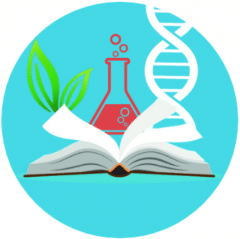Unit 2 Cells Study Guide
| How do bacterial cells differ from animal cells? |
| Cells that make proteins would have a large number of ________? |
| What protein makes up the cytoskeleton & gives a cell its shape? |
| How do phospholipids in the cell membrane move? |
| If a body cell had 24 chromosomes, how many chromosomes would be in the gamete? |
| If chromosomes have the same genes in the same location & the same banding pattern, they are said to be ___? |
| What chemical in animal cell membranes maintains their fluid nature? |
| Facilitated diffusion & active transport both require what molecules in cell membranes? |
| Name the 3 stages of cell signaling. |
| How does a sexual life cycle increase genetic variation? |
| What organelle converts light energy into chemical energy? |
| What will happens to the chromosomes in a cell that passes the restriction checkpoint? |
| What type of scope is needed to study the internal structure of a cell? |
| Does the cytoskeleton limit cell size? |
| Describe the signal-transduction pathway in animals. |
| What type of cells do not reproduce more cells by mitosis & cytokinesis? |
| Is diffusion active or passive transport? |
| How can you determine if a cell is in an isotonic solution? |
| What organelle makes lipids? |
| What is the function of these cell structures — mitochondrion, chloroplast, ribosome, lysosome, cell wall, & chromosomes? |
| How does CO2 move into a cell? |
| Name the parts of the cytoskeleton. |
| What cell organelles have two membranes? |
| What is active transport? |
| How does potassium move into & out of a cell? |
| How does one rotting piece of fruit affect the ripening of others? |
| Name all structures in a cell responsible for movement. |
| In what organisms is cell signaling less important? |
| If a cell has 92 chromosomes at the start of mitosis, how many will be in the daughter cells? |
| Describe paracrine signaling. |
| When do tetrads from in a cell? |
| What is the function of tyrosine-kinase receptors? |
| At what point are chromatids attached to each other? |
| What is the function of glycolipids & glycoproteins in animal cell membranes? |
| How does telophase of mitosis differ in plant & animal cells? |
| When the signal molecule changes the protein receptor, what process begins? |
| What is membrane potential? |
| What effect would calcium deficiency have on a plant? |
| Besides the nucleus, where else can DNA be found in a cell? |
| Do plant cells have mitochondria? Why or why not? |
| Which proteins in the cell membrane function in active transport? |
| Why would bacterial cells not be capable of phagocytosis? |
| Why are eukaryotic cells larger than prokaryotic cells? |
| What is the purpose of cell fractionation? |
| Through what type of junctions do ions travel between cells? |
| How can you determine if a karyotype is from a male or female? |
| How do genetic differences in clones occur? |
| If the spindle can not form, at what stage will mitosis no longer proceed? |
| What will be true of cells that undergo mitosis but not cytokinesis? |
| What cellular structure helps form the cleavage furrow in animal cells? |
| How do receptor proteins in a membrane act like enzymes? |
| What occurs during prophase of mitosis? |
| By what process do large solids move into a cell? |
| Does the movement of oxygen & carbon dioxide across cell membranes require energy? |
| Describe the interior of chloroplasts & mitochondria. |
| How is synaptic signaling different than hormone signaling? |
| What is a karyotype? |
| How do daughter & parent cells compare with each other? |
